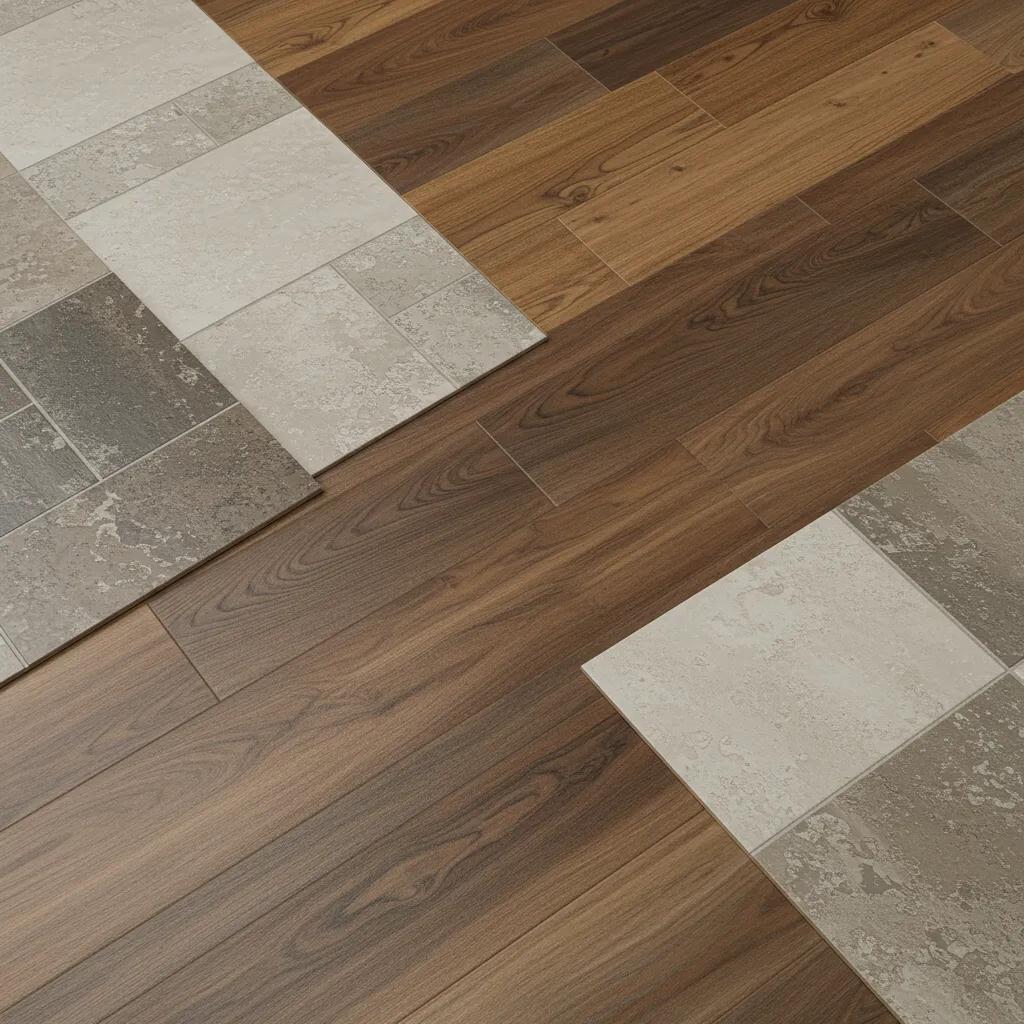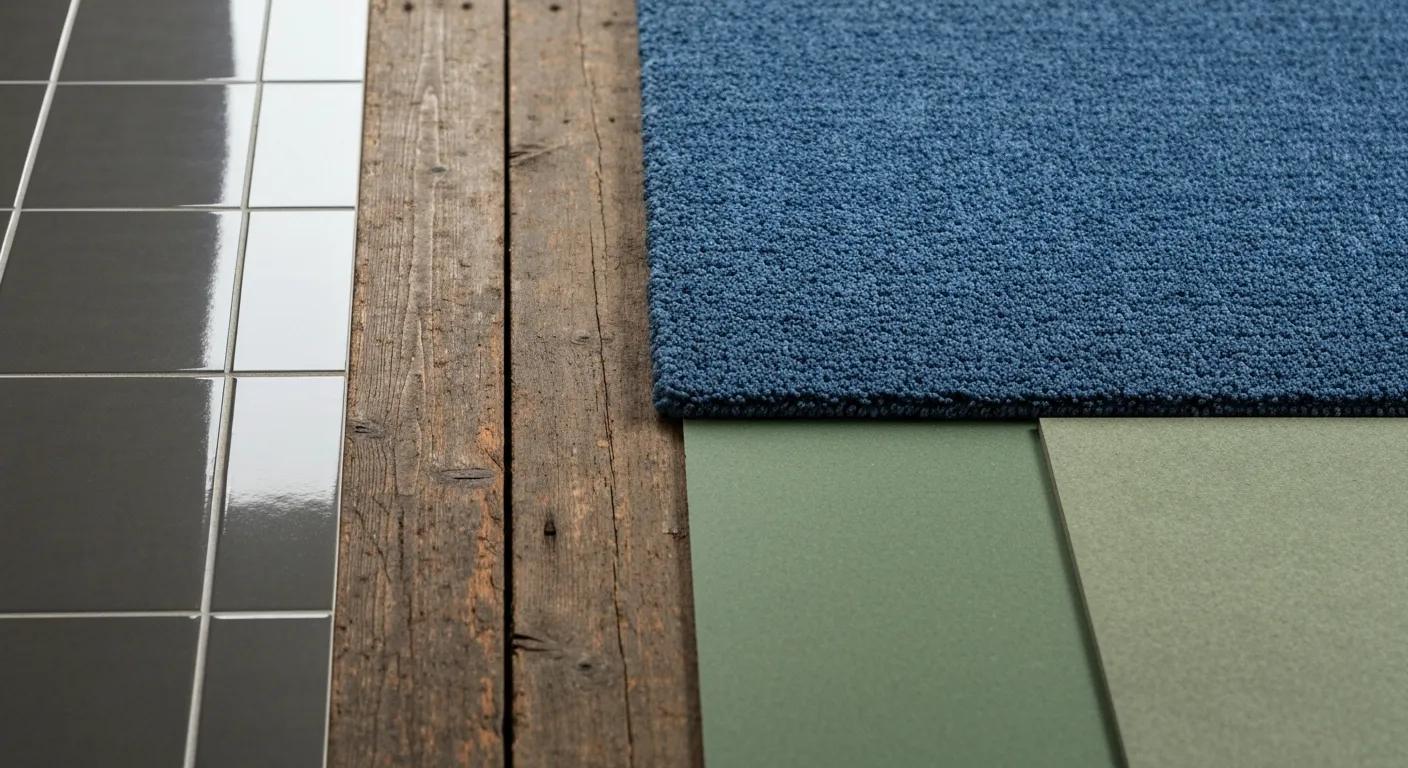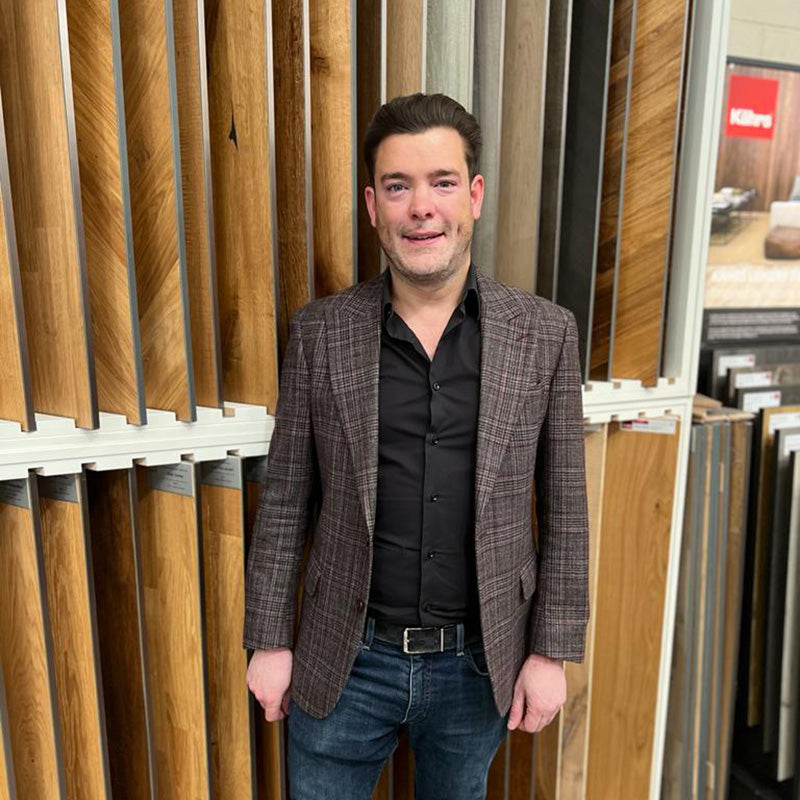Under Pressure: The Physics Behind Flooring Durability

Durability, in simple terms, is a material’s ability to take pressure, abrasion and impact and still look and perform well over time. This guide unpacks the physical causes of wear and how they translate into real‑world lifespan and care. You’ll discover how pressure, compression, abrasion and fatigue affect hardwood, laminate, vinyl (LVP/LVT), tile and epoxy, which standard tests measure those effects, and how to read ratings such as Janka, AC and PEI when matching floors to rooms and routines. Our aim is straightforward — give clear, practical information so you can choose flooring that suits your life, budget and expectations and remain satisfied for years to come.
What Are the Key Physical Forces Affecting Flooring Durability?
Most flooring problems start with a handful of basic forces: pressure and compression create dents, abrasion removes surface material, impacts can chip or crack, and repeated loading leads to fatigue over time. These forces are described by stress (force per area) and strain (how the material deforms), which tell us whether a surface will spring back or suffer permanent damage. That’s why a narrow furniture foot can dent hardwood while rolling chairs gradually abrade vinyl, or why tiny cracks from repeated knocks can grow. Below we explain pressure and abrasion in plain terms and suggest practical ways to reduce their impact — from spreading loads and using protective pads to choosing the right core or substrate.
Those same physical drivers shape material choice and installation practice. The next section links pressure and compression to indentation resistance and long‑term deformation.
How Does Pressure and Compression Impact Flooring Longevity?
Pressure concentrates force over a small contact area, raising local stress and possibly exceeding a material’s elastic limit. That’s why narrow heels or heavy furniture leave dents: the same weight over a smaller area increases stress. Materials that deform plastically keep the dent; elastic ones mostly recover. Subfloor and core construction matter too — a dense, stable core spreads loads and reduces peak stresses. Practical steps include choosing harder finishes where point loads are likely, fitting wider furniture feet or protective pads, and ensuring a flat subfloor so pressure isn't focussed in one spot.
Next we look at abrasion — a different wear process that removes material from the surface rather than deforming it.
What Role Do Abrasion and Surface Wear Play in Flooring Durability?
Abrasion gradually strips the top layer and is a major cause of visible ageing. Two‑body abrasion is direct surface‑to‑surface wear; three‑body abrasion happens when grit or particles get trapped and act like sandpaper. Surface hardness and protective coatings — for example, polyurethane with aluminium oxide or modern urethane finishes — slow abrasion, while the material’s toughness determines whether scratches chip away or simply indent. Laboratory tests such as the Taber abrasion test simulate repeated wear; a lower mass loss in those tests usually means the finish will retain its appearance longer.
To reduce abrasion day to day, choose thicker, tougher wear layers and hard finishes, and keep floors clear of grit that accelerates wear.
How Do Different Flooring Materials Resist Wear and Damage?

Each flooring family resists wear in its own way: hardwood depends on its cellular structure plus the finish applied; laminate uses an HDF core with a melamine wear layer; vinyl protects a printed décor layer with a clear wear coat and a stabilising core; tile relies on vitrification and density; and epoxy forms a cured, cross‑linked surface resistant to abrasion and chemicals. Composition determines hardness, toughness, elasticity and moisture sensitivity, so choose materials for the loads and environment they’ll face. For example, porcelain is excellent against abrasion and moisture but can chip under sharp impact, while vinyl tolerates moisture and small impacts well but depends on wear‑layer thickness. When comparing types, focus on the likely failure modes — indentation, scratching, delamination or moisture damage — and use the appropriate tests and ratings to evaluate them. The table below summarises the main mechanisms and practical ratings to guide your choice.
This table maps common materials to the mechanisms that govern performance and to practical ratings you can check.
| Flooring Type | Primary Durability Mechanism | Practical Outcome / Example Rating |
|---|---|---|
| Hardwood | Cellular hardness combined with a protective finish | Resists indentation; consider Janka hardness together with finish quality |
| Laminate | HDF core topped by a melamine wear layer | Abrasion resistance driven by AC rating and wear‑layer durability |
| Luxury vinyl (LVP/LVT) | Clear wear layer over printed vinyl and a stabilising core (SPC/WPC) | Wear‑layer measured in mils; core helps reduce dents |
| Ceramic / Porcelain Tile | Vitrification and high density | High abrasion and moisture resistance; check PEI for surface suitability |
| Epoxy Flooring | Cured, cross‑linked polymer matrix | Strong chemical and abrasion resistance; thickness and cure affect service life |
No single metric covers every failure mode — pick tests that match the risks you care about.
Quick pros and cons to help match each material to likely use cases and trade‑offs:
- Hardwood: Durable under foot traffic and refinishable, but sensitive to moisture and point loads.
- Laminate: Excellent abrasion resistance for the price, though joints and HDF cores can be vulnerable to water.
- Luxury vinyl: Often fully waterproof and easy to maintain; longevity depends on wear‑layer thickness and finish chemistry.
- Tile: Outstanding abrasion and moisture resistance, though it can chip on hard impact and feels cold underfoot.
These contrasts lead into the next sections on wear layers and vinyl performance.
What Makes Hardwood Flooring Durable: Janka Hardness Scale Explained?
The Janka test measures the force needed to press a standard steel ball into wood and provides a comparative measure of indentation resistance between species. It’s a useful indicator where point loads or heavy furniture are a concern, but it does not capture surface finish, scratch resistance or how wood reacts to moisture. Grain, cellular structure and finish also influence real‑world performance — engineered boards with robust top coats can sometimes outperform naturally harder solid species. Use the Janka number as one input alongside finish systems, plank thickness and the installation environment.
How Do Laminate Flooring AC Ratings Reflect Abrasion Resistance?
AC (abrasion class) ratings classify laminate surface wear from AC1 to AC5 and give a simple guide for uses from light residential to heavy commercial. The AC test focuses on surface abrasion, not indentation or water resistance, so a high AC score means better protection against scuffs but does not guarantee resistance to moisture or severe impacts. Also consider HDF core density and locking system quality — they influence denting and plank stability. Treat AC as a targeted indicator and check core and installation details for the full picture.
Why Is Wear Layer Thickness Critical for Vinyl Flooring Durability?
The wear layer is the clear surface that takes abrasive and chemical abuse on vinyl floors. It’s measured in mils and, together with its chemistry (for example, urethane or aluminium‑oxide additives), largely determines when visible wear appears. Thicker wear layers typically last longer under heavy abrasion, but formulation and finish quality matter too — a well‑made thinner layer can outperform a poorly made thicker one. Core types like SPC and WPC influence how loads travel through the plank, affecting dents and edge stability, while finish chemistry affects scratch and UV resistance. The table below links typical mil ranges to suggested traffic levels — use it alongside manufacturer guidance and warranties.
| Vinyl Product Type | Wear Layer Thickness (mils) | Recommended Use / Traffic Level |
|---|---|---|
| Entry‑level residential | 6–12 | Low‑traffic rooms and bedrooms |
| Mid‑range residential | 12–20 | Living areas and average family traffic |
| Premium residential / light commercial | 20–28 | Busy family rooms and light commercial spaces |
| Commercial‑grade | 28+ | Heavy commercial use and public areas |
Choose mil values with composition and warranty in mind — thickness helps, but chemistry and manufacturing quality finish the picture.
- Material chemistry matters: Urethane with aluminium oxide improves scratch and abrasion resistance beyond thickness alone.
- Finish systems affect longevity: Factory‑cured finishes typically outlast post‑installation coatings.
- Core interaction: SPC cores reduce indentation and stabilise the wear layer under point loads.
What Is the Recommended Wear Layer Thickness for LVP and LVT?
Recommended wear‑layer thickness depends on traffic: rooms with light use are fine with thinner layers, while busy homes and commercial areas benefit from thicker, premium layers that delay visible wear. Warranties often reflect intended use and are a practical guide, but always read warranty terms alongside stated mils and finish chemistry. There are diminishing returns at very high mils, so balance cost against realistic traffic and maintenance. In short, combine mil guidance with finish type and core construction to estimate service life rather than relying on mils alone.
Understanding core types shows how load distribution and stability interact with wear‑layer choices.
How Do SPC and WPC Cores Enhance Vinyl Flooring Performance?
SPC (stone plastic composite) and WPC (wood plastic composite) cores each offer different benefits. SPC is mineral‑reinforced, giving strong dimensional stability and excellent resistance to indentation — a solid choice where temperature swings or heavy loads occur. WPC is softer and more resilient, offering better underfoot comfort and sound reduction but slightly less hardness than SPC. Both support the wear layer and reduce stress concentrations that lead to premature surface failure. Choose SPC when indentation and thermal stability are priorities; choose WPC when comfort and acoustic performance matter more.
Which Standard Tests Measure Flooring Durability and How Do They Work?
Several standard tests target specific durability modes: Janka for wood indentation, Taber abrasion for surface wear, AC and PEI ratings for laminate and tile surface suitability, and falling‑ball or impact tests for chipping and fracture resistance. Each test addresses a narrow failure mechanism, so match tests to the main risks in your space — Janka for dent risk, Taber for scratch‑heavy environments, PEI for tile under foot traffic. ASTM and ISO publish many of these protocols; checking manufacturer test reports or independent data helps convert lab numbers into realistic expectations. The table below summarises common tests and how to interpret their results.
| Test Name | What It Measures | How Results Interpret Durability |
|---|---|---|
| Janka Hardness | Wood indentation resistance | Higher Janka = less likely to dent under point loads |
| Taber Abrasion | Mass loss under controlled rotary abrasion | Lower mass loss = better surface abrasion resistance |
| AC Rating (Laminate) | Surface abrasion class for laminates | Higher AC = suitable for heavier residential/commercial use |
| PEI Rating (Tile) | Tile surface wear classification | Higher PEI = suitable for heavier foot traffic and commercial spaces |
| Falling Ball / Impact | Resistance to chipping or fracture from impact | Higher resistance = lower risk of chips from dropped objects |
No single test answers every durability question — combine targeted tests with an understanding of the environment to predict in‑place performance.
How Does the Janka Hardness Test Measure Wood Flooring Strength?
The Janka test records the force required to press a standard steel ball into wood to a fixed depth, producing a comparative number for indentation resistance. Use it to assess dent susceptibility under point loads, but add context: finish quality, plank thickness and engineered constructions will change how a floor behaves in daily life. Moisture‑related dimensional changes also affect long‑term performance. Treat Janka as one useful input alongside finish performance and moisture‑stability data when choosing a species for furniture‑heavy or high‑heel areas.
These limits point naturally to complementary ratings for other materials, which follow below.
What Are AC and PEI Ratings and How Do They Indicate Flooring Resistance?
AC ratings describe laminate surface abrasion across levels tied to residential and commercial use, while PEI ratings grade tile surface wear by simulating abrasive cycles and foot traffic. Both provide standardised proxies for surface durability: higher values indicate tougher service in busier spaces. Neither AC nor PEI covers moisture tolerance or impact resistance fully, so pair them with proper substrate preparation, installation quality and other tests (like Taber or impact tests) where relevant. That layered approach helps you read ratings as part of a broader durability assessment rather than as standalone guarantees.
How Do Environmental Factors Influence Flooring Durability?
Environmental stresses — moisture, temperature swings, UV and chemicals — affect flooring in different ways, altering dimensional stability, finish lifespan and adhesive bonds over time. Moisture causes swelling, cupping and bond failure in hygroscopic materials like hardwood and laminate, while vinyl and tile cope better with moisture but still need correct subfloor preparation to avoid vapour issues. Thermal expansion creates joint stress and can lead to buckling or gaps if movement isn’t allowed for. UV accelerates polymer breakdown and fading; UV‑stable coatings or shading reduce that risk. The list below summarises key protections to consider for different environments.
- Moisture control: Use vapour barriers, acclimatise materials and choose waterproof products where water is likely.
- Temperature allowances: Leave expansion gaps, use recommended adhesives, and prefer low‑expansion cores in sunlit rooms.
- UV protection: Specify UV‑stable finishes or add shading in high‑sun locations.
These environmental considerations point to specific installation and maintenance choices that influence final product selection.
How Does Moisture Affect Flooring Materials and Their Lifespan?
Moisture moves into materials, stresses bonds and adhesives, and can cause swelling, cupping, delamination and mould in vulnerable products. Hardwood expands and contracts with humidity and needs acclimatisation and expansion gaps. Laminate and engineered boards fail at joints and edges if water penetrates the HDF core. Vinyl and tile resist water better but still require correct subfloor preparation to prevent vapour problems. Practical prevention includes measuring subfloor moisture, using suitable underlays or vapour barriers, following manufacturer acclimatisation steps and choosing waterproof products where needed.
What Is the Impact of Temperature and UV Exposure on Flooring?
Temperature cycles drive expansion and contraction according to each material’s thermal coefficient, which can open joints, cause buckling or fatigue adhesives if movement isn’t accommodated. Rooms with large daily or seasonal swings — sunrooms, conservatories — benefit from low‑expansion cores such as SPC and from installation practices that include movement gaps. UV exposure breaks down polymers and fades colours, reducing surface toughness; finishes with UV stabilisers or aluminium oxide help. Preventive steps include choosing UV‑stable finishes, adding shading and selecting materials with proven thermal stability for the intended space.
How Can You Choose the Most Durable Flooring for Your Space?
Picking durable flooring means matching material properties and test metrics to the room’s environment, traffic level and how much maintenance you will do — while weighing budget and warranty. Start with a short checklist: traffic intensity, point‑load risks, moisture exposure, pets and maintenance routines. Then map those needs to material families and tests (Janka for dents, AC/Taber for abrasion, PEI for tile). Our goal is to give clear guidance so you can find and buy suitable flooring at competitive prices and with confidence. After using the checklist, check manufacturer test data, warranty terms and recommended installation steps to reduce early failures. This combined approach offers the best chance of long service life and predictable upkeep.
- Assess use‑case: Note traffic level, point‑load risk and moisture for the room.
- Match failure modes: Use tests and ratings that measure the dominant risks you identified.
- Select material family: Choose hardwood, laminate, vinyl, tile or epoxy based on matched properties and constraints.
- Verify manufacturer data: Confirm wear‑layer mils, AC/PEI classes and any third‑party test reports before you buy.
Maintenance and realistic warranty expectations often determine real service life, so pick products whose guidance fits your installation and upkeep plan.
Which Flooring Types Are Best for High‑Traffic and Commercial Areas?
For busy commercial spaces, select floors with proven surface abrasion resistance and structural stability: commercial‑grade vinyl with high mil wear layers, vitrified porcelain with strong PEI ratings, or commercial laminate and resinous systems designed for heavy use. Look for low Taber mass loss, high AC or PEI classifications, and cores or substrates that resist indentation and movement. Installation quality — thorough subfloor prep, correct adhesives and proper expansion gaps — often makes the biggest practical difference, so factor in contractor skill. When you compare lifecycle cost against initial price, higher‑spec materials frequently save money by reducing downtime and replacements.
What Flooring Options Offer Waterproof and Pet‑Friendly Durability?
Waterproof, pet‑friendly options include LVP/LVT with generous wear layers, glazed porcelain tile and some epoxy systems. These combine moisture resistance with finishes that withstand scratches and are easy to clean. For homes with pets, prioritise high wear‑layer vinyl or glazed tile, finishes with scratch inhibitors and cores with good indentation resistance to limit claw damage. Regular care — removing abrasive grit quickly and using entry mats — keeps floors looking better for longer. Choosing products tested for both abrasion resistance and waterproofing gives the best protection against pet traffic and moisture.



